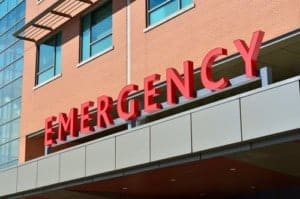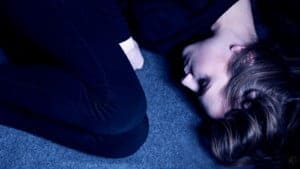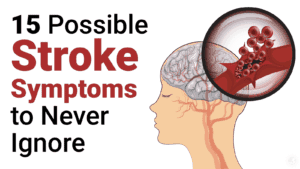Occupational therapy (OTR) is vital to the individual who is recovering from a stroke. Regardless of the type of stroke, every individual who suffers from one deserves to have their dignity preserved.
This return to normalcy means getting their life back by getting the proper therapy. The goal is to help these patients learn how to do everyday tasks on their own and regain their independence.
“The secret of your success is found in your daily routine.” ~John Maxwell
Therapist Reveals How Patients Benefit from Occupational Therapy
Post-stroke rehabilitation is critical for the individual who suffered the stroke, and for the caregiver.
Care providers must keep the patient and active (if able) during the transition from the initial 24 to 48-hour window post-stroke. However, after a 24-48 hour post-stroke period of stabilization, speech therapy, and physical therapy begins.
That might sound fast. But it’s essential to “get to work” as soon as possible after this shock to the body. That’s because already weakened muscles might continue to decline.
Several days to weeks after the stroke, patients will be ready to start occupational therapy. This time frame depends on the individual’s speed of recovery.
While physical therapists rehabilitate large muscle groups, occupational therapists address excellent motor skills. The patient needs both to return to daily life faster.
In other words, occupational therapy helps patients learn how to care for themselves as they once did.

What activities does a stroke patient learn in occupational therapy?
An occupational therapist will examine the client’s environment to determine how their lives are impacted. That step is needed because a stroke changes life significantly for an individual. This could mean no ability to take care of themselves, speak, or read as they once did.
To name a few, some included activities addressed are as follows:
- Brushing their hair
- Flossing and brushing their teeth
- Eating with utensils
- Drinking from a cup
- Meal preparation
- Cleaning the house
Over time therapy will bring them back to a sense of purpose. Some stroke survivors learn how to drive for the second time, and enjoy their newfound independence.
Some more challenging activities, like doing puzzles or activities that are completed in steps are often broken down into bite-sized activities. That’s because stroke survivors often have to re-learn how to complete these types of activities in sequences. Once they have mastered each portion, they can complete the entire task.
An occupational therapist is a guide through the entire process of stroke recovery. Helping the patient practice each activity will help them memorize each portion. Over time, they re-learn muscle memory and see results.
Along with practicing these daily activities, the field of occupational therapy is about improving safety for the stroke survivor.
Some of these safety measures include:
- Installing grab bars in the shower or near the toilet
- Removing challenging barriers or furniture
- Specially designed utensils
- Moving items in the kitchen to make them more accessible
Here’s another question people often ask regarding recovery. Is occupational therapy effective for all stroke survivors?
The Efficacy of Occupational Therapy
The question that most caregivers and family members have is, “Does occupational therapy always work?”
Studies show that stroke survivors who continue with occupational therapy have long-term success. Those who do not continue with therapy tend to revert to post-stroke symptoms.
When these therapies are removed, the practice of the activity is absent. Without practice, the skill will decrease dramatically.
“Man, through the use of his hands, as they are energized by mind and will, can influence the state of his own health.” Mary Reilly OTR, EdD

Related Benefits of Occupational Therapy
This unique therapy has many benefits directly related to helping clients carry out daily tasks. However, there are other benefits related to stroke recovery that are just as important.
One of the primary struggles stroke survivors face is depression and anxiety. Working with an occupational therapist can help to reduce these symptoms and improve overall mental health.
Additionally, when clients are learning from their therapist, they are learning to cope with life as it now is.
Some students have also experienced improvement with ADHD symptoms. This is important to note because it helps with organizational skills.
Those who have suffered from a stroke will lack skills for everyday tasks. The ability to compartmentalize projects is helpful. That ensures that stroke survivors can re-learn how to organize daily living in some capacity.
Why Makes Occupational Therapy Unique?
Most patients think of other therapies, those that address a group of large muscles, when they consider stroke recovery.
Occupational therapy is unique in that it’s an entirely holistic approach. The approach takes on human nature. In addition to training small muscle groups, it trains the brain through practice to do things it once knew.
It is also behavioral. Therapists in this field will look at how their client’s lives are affected by the massive change in their lives.
The inability to function daily on their own can induce anxiety and depression in stroke victims.
Those who were once strong and independent adults report feeling as if they reverted to living in a child’s body. The frustration is almost too much to bear at times. The solace in occupational therapy is for the client and their loved ones and their caregivers as well.
The ability of a therapist to take a peek at the client’s environment will give them clues on how they can improve their overall quality of life.
How Occupational Therapy Impacts the Lives of Caregivers and Family
Loved ones and caregivers of stroke survivors will also benefit from therapy. When someone loses their ability to do everyday tasks on their own, they become more reliant on their family members and caregivers.
Occupational therapy is referred to as sensory-driven therapy. This means that those who are working with an occupational therapist will be doing activities that involve the senses.
Research conducted by Thomas Jefferson University in 2010 indicated that OTR was effective for children and teenagers. It is an evidence-based practice. This means that the research that has been conducted many times over continues to present consistent results.
Children associate this therapy by gaining a sense of accomplishment. The same study revealed that many children struggle to process information of a sensory nature. This is where OTR comes into play, and it’s evidence-based.
This therapy is tailor-made for each child.
This challenge is also true of the stroke patient. Thus, post-stroke rehabilitation works in the same fashion. What the client lost can be regained through specific practice with a therapist.
Practicing these activities which involve sensory stimuli should be tailored to each individual as their needs require.
This “practice” causes the brain to process this information. Repetition is the focus of post-stroke rehabilitation.
 Final Thoughts on Occupational Therapy for Stroke Patients
Final Thoughts on Occupational Therapy for Stroke Patients
Post-stroke rehabilitation is crucial after a person suffers a stroke. The first 24 to 48 hours of care set the tone for the patient’s outcome.
This is why it is important to start engaging the patient quickly. As soon as something happens, the patient’s time at the hospital will be focused on keeping a daily routine.
This routine initially begins with physical therapy and speech therapy. The journey for a stroke survivor can be lengthy, starting with about 3 to 4 weeks or more in a hospital until they enter a skilled nursing facility.
This therapist will be dedicated to helping their client re-learn how to do everyday tasks that they once did without assistance. This is an important time for both the stroke survivor and their family and caregivers to learn more about OTR and how it works, and how it will benefit everyone.
OTR is, by far, one of the most reliable forms of therapy to combine with standard conventional therapy. While it offers a more holistic approach, it is viewed from the aspect of why how their client’s lives have changed.
Many stroke survivors end up with weakness or paralysis in one of their limbs. This means that physical therapy and OTR are essential to enhance their quality of life.
An occupational therapist will look for ways to improve their client’s quality of life by helping them to carry out tasks that are essential to everyday life.
When a stroke survivor can brush their teeth, dress, and bathe or shower on their own, it will help them get their dignity back. And that is the most significant takeaway a patient gleans from occupational therapy.














 Community
Community

